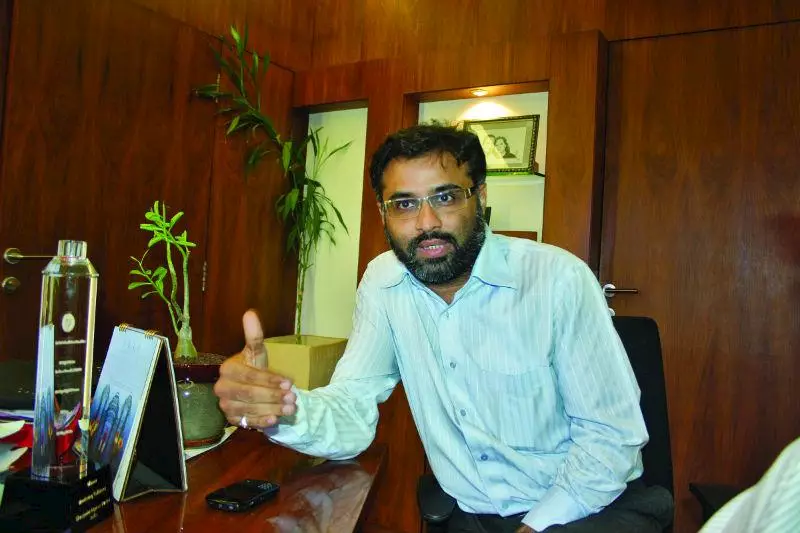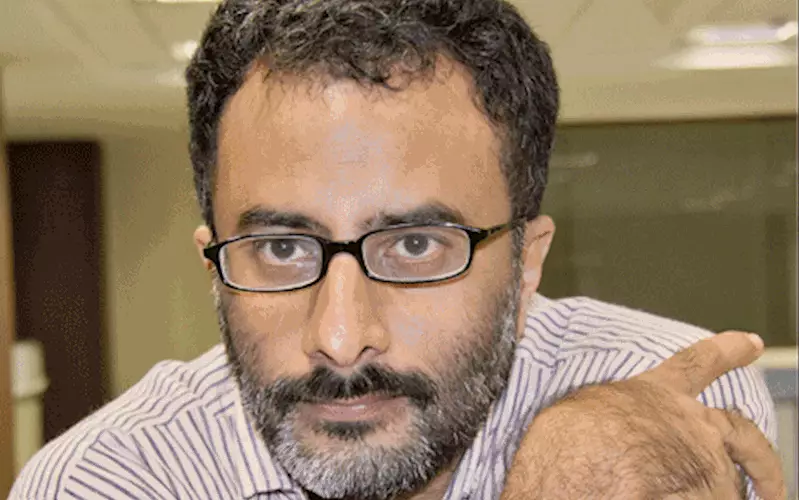Is print power peaking? Or declining?
It's definitely not all doom and gloom. My colleague, Rahul Kumar, informs me about the revival of print in Kolkata and East India.
24 Aug 2013 | By Ramu Ramanathan
There's Mahesh Khandelwal of Avail in Kolkata, who along with four partners set up NexGen in Sikkim. The firm is the first to set up a packaging unit in Majhitar, Rangpo, East Sikkim. The forte is folding cartons an d corrugated boxes (shippers) with a sizeable investment of over Rs 200 million. The unit has a new and pre-owned Mitsubishi as well as a raft of die-cutters and folder gluers from Bobst.
d corrugated boxes (shippers) with a sizeable investment of over Rs 200 million. The unit has a new and pre-owned Mitsubishi as well as a raft of die-cutters and folder gluers from Bobst.
This has tremendous relevance for the rest of the industry; and represents an opportunity. Especially in categories with the maximum launches like pharma, FMCG and personal care.
Even though Nielsen data seems to suggest that the sales growth of more than a dozen key consumer goods category in the June quarter was slower than both the previous quarter and the year earlier period. This means, even though the combined sales of companies was 15% in June 2012 and 22% in June 2011; the sales of Hindustan Unilever, Dabur, Godrej Consumers, Emami, Marico, GSK Consumer, Nestle India, ITC and Colgate India grew 13% during the quarter ended June.
Enthusiasm for print-packaging is easily explained. The number of Indian consumers is growing rapidly, and there's a new audience which continues to retain a fondness for print in the form of micro pouches or Tetrapak.
Radical changes in the luxury space have a demographic explanation. The number of people on very high incomes is growing in India. Targeting a richer audience offers a better chance to sell more expensive products (and packaging) and charge higher prices.
During a visit to a mall in Bengaluru, I saw an assortment of choco filled biscuits. It's hybrid of choco fill and crunchy chocolates. But the real game changer is the packaging which makes the outer layer attractive. Some of it is rendered by the multi-locational Trigon. In their locations in Mumbai, Bengaluru and Delhi, this nifty firm does packaging design, proofs and mock-ups on actual substrate, virtual stores, and 3-dimensional PDF. In all this, what Trigon achieves is a tech-solution which is both pretty cheap to produce, and I would argue, have a lot of relevance to the future of packaging. More importantly, it helps the big brands to fight off disruption from the explosion in the online and social media space.
Trigon is a good riposte to sceptics who feel tech fatigue has hit print.
What does this tell us, if anything, about the future of print?
Is there a palpable rate of decline, and will print lose more space this year; and the next year? We spoke to some of the wide-format equipment manufacturers and some of them said they have seen a decline in the number of machines installed. N S Pradeep of EFI agreed to this assessment. But he also mentioned that EFI has installed 17 Rasteks and two Vuteks in the past year. S M Ramprasad at Epson spokes of an installed base of 500 in their large-format segment and 400 units in the A3 segment.
What continues unabated is new launches, at an astonishing rate in the last two years. Remember, this is print hardware - not digital replicas and tablets.
These figures hide the complexity of a shifting market. Success stories abound - and at PrintWeek India we publish so many of them. It's clear, there is a booming market out there.
The mantra is true: India loves print.
Most commercial printers feel - whether they admit it or not - that a market for print is on the decline. The question is whether they have enough time to take their buyers and brands on the journey to what comes next.
This is what Silverpoint has done with its brochure which introduces the concept of Augmented Reality (AR). During a demo, Saifee Makasarwal, COO at Silverpoint and the brain behind the AR brochure, says, “This brochure is an attempt to take print beyond the usual, ink on paper, to a level where you can connect to the digital world through print.”
 Silverpoint’s AR brochure is an example of the pool of possibilities and applications that can be offered with print and AR. The brochure has a QR code on its cover. It helps you to download the Silverpoint app from Google Play Store or Apple Store. Once installed and run, the app takes charge of your phone’s camera. And then each page you turn while viewing it through your phone, you are enthralled. At one instance a video pops up and takes you through a corporate video of the company, while on the next page a 3D structure of a building emerges; where you can view every nook and corner of the building from all angles. It also has mobile commerce embedded into it, which offers you to buy the product in the picture directly from your mobile device. “Possibilities with AR are endless,” explains Makasarwala.
Silverpoint’s AR brochure is an example of the pool of possibilities and applications that can be offered with print and AR. The brochure has a QR code on its cover. It helps you to download the Silverpoint app from Google Play Store or Apple Store. Once installed and run, the app takes charge of your phone’s camera. And then each page you turn while viewing it through your phone, you are enthralled. At one instance a video pops up and takes you through a corporate video of the company, while on the next page a 3D structure of a building emerges; where you can view every nook and corner of the building from all angles. It also has mobile commerce embedded into it, which offers you to buy the product in the picture directly from your mobile device. “Possibilities with AR are endless,” explains Makasarwala.
The rupee and the troubles therein
And in the midst of all this, I spoke to a banker who supports many of the print entrepreneurs. I asked him what does a printer do about the rupee. He replied: Run! Run! Run!
Then in a serious tone, he added, "Look at exports; as it’s the only natural hedge to falling rupee … Something I’d advised most of my customers over a year ago - and glad most of them took a baby step earlier and are now happy." His rationale: "For eg export proceeds, helps them to knockoff obligations of value of machinery imported or maintenance issues."
 In the midst of all this, an economist at Mumbai University points in the direction of doctoral thesis by Dr Babasaheb Ambedkar. This thesis was published as a book in 1923.
In the midst of all this, an economist at Mumbai University points in the direction of doctoral thesis by Dr Babasaheb Ambedkar. This thesis was published as a book in 1923.The man who created the Constitution of India offers interesting insights almost 100 years ago about the vexed state of the Indian rupee.
Dr Ambedkar asks the question: “This controversy involves two distinct questions: (a). Should we stabilise our exchange and (b) What should be the ratio at which we should stabilise?”
Today's spiraling rupee has a different context, but the query Ambedkar is posing is: Should the Reserve Bank of India try to defend the rupee and what value should it defend?
Dr Ambedkar's solution: A limited devaluation of the rupee. This was not what the colonial government representing British business interests wanted (maintain the exchange rate). Meanwhile the Indian nationalists who represented the Indian business interests wanted (a cheaper rupee).
Some things, never change.











 See All
See All